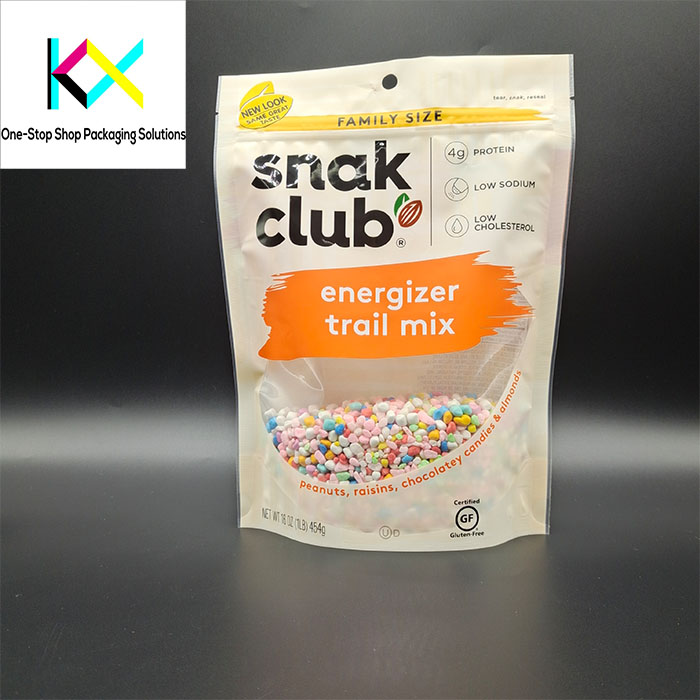Common Materials and Bag Types for Grain Bags (Including Common Sizes)
Grain bags play a crucial role in the packaging and transportation of various grains, seeds, and other agricultural products. With the increasing demand for high-quality packaging solutions that ensure product freshness and safety, it’s essential to understand the common materials and bag types used for grain packaging. This article will explore the materials used in grain bags, their typical bag types, and some common sizes.




1. Materials Used in Grain Bags
The choice of material for grain bags is vital as it directly impacts the bag’s durability, barrier properties, and overall performance. Here are some commonly used materials:
Polyethylene (PE): This is one of the most widely used materials for grain bags. PE bags are known for their excellent moisture resistance and flexibility. They can be produced in various thicknesses to accommodate different packaging needs. High-density polyethylene (HDPE) is often used for heavier grains, while low-density polyethylene (LDPE) is preferred for lighter products.
Polypropylene (PP): PP bags are another popular choice for grain packaging. They are stronger and more resistant to tearing than polyethylene bags. Polypropylene also has excellent barrier properties, protecting the contents from moisture and contaminants. These bags can be woven or non-woven, offering versatility for various applications.
BOPP (Biaxially Oriented Polypropylene): BOPP bags are a type of polypropylene bag that has been stretched in two directions. This process enhances their strength and clarity, making them ideal for products that require visibility and a professional appearance. BOPP bags are often used for retail packaging of grains.
Kraft Paper: While not as common as plastic materials, kraft paper bags are still used for certain grain products, especially organic or premium grains. These bags provide excellent breathability, allowing the contents to stay fresh while offering a rustic and eco-friendly appearance.
Compostable Materials: With the growing focus on sustainability, some manufacturers are beginning to use compostable materials for grain bags. These bags are made from plant-based materials and are designed to break down in composting conditions, reducing environmental impact.


2. Bag Types for Grain Packaging
Grain bags come in various shapes and designs to meet the specific needs of different products and applications. Here are some common bag types:
Flat Bags: These are simple, unsealed bags that can be filled and sealed at the top. Flat bags are commonly used for bulk packaging of grains and can be made from PE or PP. They are easy to stack and store.
Gusseted Bags: These bags feature an expandable side gusset, allowing them to stand upright when filled. Gusseted bags provide more volume and are ideal for packaging larger quantities of grains. They are often made from PE or BOPP.
Woven Bags: Woven polypropylene bags are durable and breathable, making them suitable for storing grains. These bags are typically used for bulk shipments and can be printed with branding or product information.
Pouch Bags: Pouch bags, often made from laminated materials, offer a more premium packaging option. They are resealable and can include features like zippers or tear notches, making them convenient for consumers. Pouches are ideal for smaller quantities of grains or specialty products.
Valve Bags: These bags are designed for bulk packaging and feature a built-in valve for efficient filling. They are typically made from woven polypropylene and are used for grains that require quick packing and transportation.




3. Common Sizes of Grain Bags
The size of grain bags can vary significantly based on their intended use. Here are some common sizes:
Flat Bags: Common sizes include 12″x18″, 14″x20″, and 16″x24″. These sizes are suitable for small to medium quantities of grains.
Gusseted Bags: Sizes typically range from 25 pounds to 50 pounds in capacity, with dimensions like 10″x5″x24″ or 12″x6″x30″.
Woven Bags: These bags often come in sizes of 50 pounds or more, with dimensions such as 14″x26″ or 16″x30″.
Pouch Bags: Smaller sizes like 8″x12″ or 10″x15″ are common for retail packaging, allowing consumers to purchase grains in manageable quantities.
Valve Bags: These bags can hold larger volumes, typically ranging from 50 pounds to 100 pounds, with sizes around 24″x36″.
4. Conclusion
Understanding the common materials and bag types used for grain packaging is essential for manufacturers, distributors, and consumers alike. The choice of material impacts the durability, barrier properties, and overall performance of the packaging. With various bag types available, from flat and gusseted bags to woven and pouch bags, there is a solution for every packaging need. Additionally, knowing the common sizes helps ensure that the right packaging is selected for specific grain products.
As the industry evolves, there will likely be an increased focus on sustainable materials and innovative designs, further enhancing the functionality and appeal of grain bags. By staying informed about these developments, stakeholders can make better choices that benefit both their products and the environment.
You can visit our website to know more about our flexible packaging pouch:
